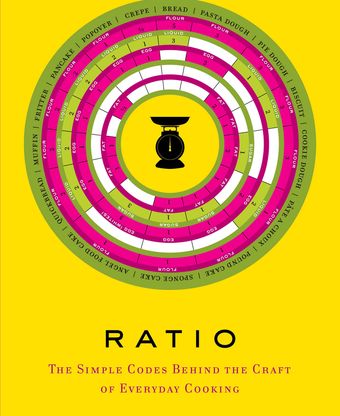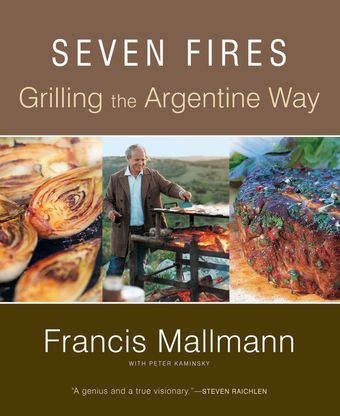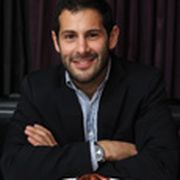Here, then, we have Michael Ruhlman's Ratio, "The simple codes behind the craft of everyday cooking," versus Francis Mallmann and Peter Kaminsky's Seven Fires, "Grilling the Argentine Way." The higher-ups at food52 have essentially tasked me with the job of comparing science with art. Seven Fires -- art -- is a traditional cookbook insomuch as it has a theme (deep, rustic open fire cooking), a back-story and many specific recipes. Ratio -- science -- is a cook's book, a reference guide to the ratios that govern all recipes (all pasta dough begins with the ratio of 3 parts flour to 2 parts egg, for example). While it does contain actual recipes, they are provided more as exhibits than the basis for cooking.
And by way of intro to this judge, let me acknowledge that I cook infrequently. The site is called Eater, and not Cooker, for a reason. That said, I've enjoyed enough food and endured more than enough terrible food to have taken a keen interest in how the sauce is made.
The battle over these books is an intellectual one. For on its face, there is no contest: Ratio is black and white and all theory, and where it does provide specific recipes, it falters. Seven Fires is not perfect, but even where there was massive user error (on my part), the recipes in this book netted rich, satisfying meals. And, more in the mold of current cookbooks, it is as much a photo archive of Mallmann's cuisine as it is a recipe collection. (In fact, it might be more the former: a recipe for Shrimp with Spaetzle -- excellent, by the way -- calls for peeled and deveined shrimp, yet is pictured using large head-on prawns.)
Where Ruhlman does nail it is in suggesting that the modern cook should take pride in his own imagination and not be boxed into something as specific as Seven Fires. If one has the building blocks, the ratios, then any home chef with a modicum of creativity should be able to elevate those fundamentals to greatness on his or her own. In theory, I agree. I fully embrace the thrill of trial and error and, then, success, and I acknowledge that it is the basis for great cooking.(Although, don't most cooks today, in this post-Child, post-Pepin world, know many of these ratios instinctively?)
The problem is that home cooks have day jobs and don't necessarily have the patience or perseverence to cook, say, 50 batches of bread (5 parts flour, 3 parts water) if after that you'd still have been better off using the Bouchon Bakery recipe as a starting point. Indeed, I look to my cookbooks to save me much of the time and cost burden of trial and error. I am fully comfortable ceding the majority of the creativity to a guy like Mallmann -- or Boulud or Ripert or Keller.
So, verdict time, if the esteemed Ruhlman begins to offer a laminated one-sheet version, I will order up a case of them, for there is inarguably a great value in having every basic recipe at your fingertips. But, because with it on the first try I cooked food that I then thoroughly enjoyed eating, the winner on this day is Seven Fires.



5 Comments
Ratio reminds me a bit of Pam Anderson's "How to Cook without a Book." Once you know her "formulas," you can improvise and create a variety of dishes. It seems clinical, but it actually liberates the home cook. On the surface, Ratio doesn't celebrate the art of cooking or baking, but dig deeper and you find it's not just a science book.